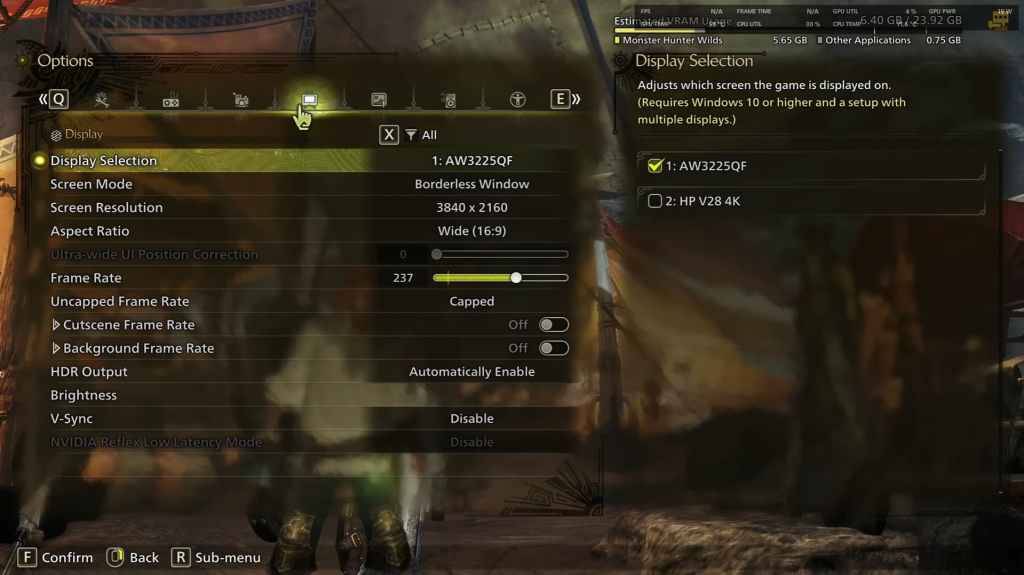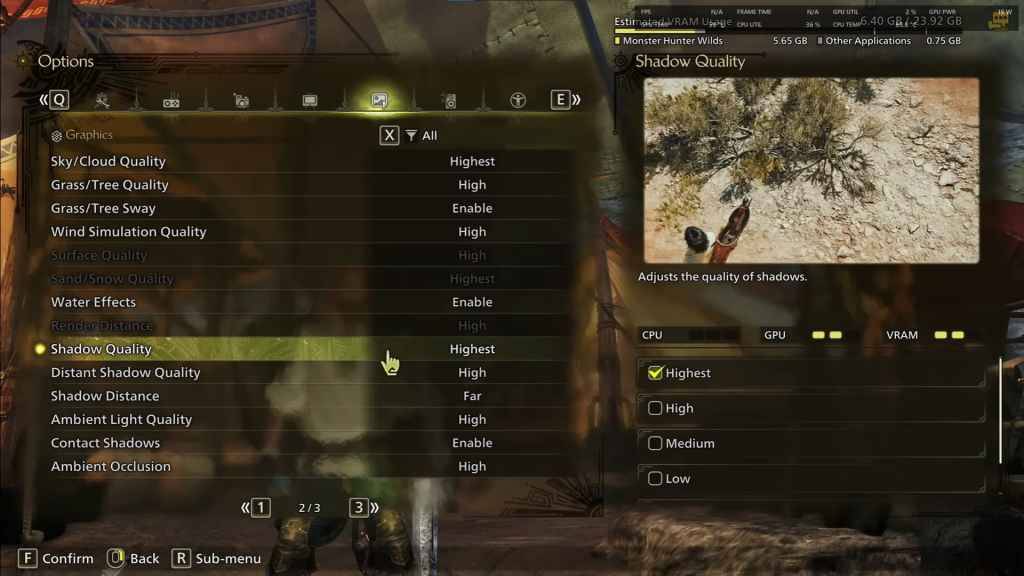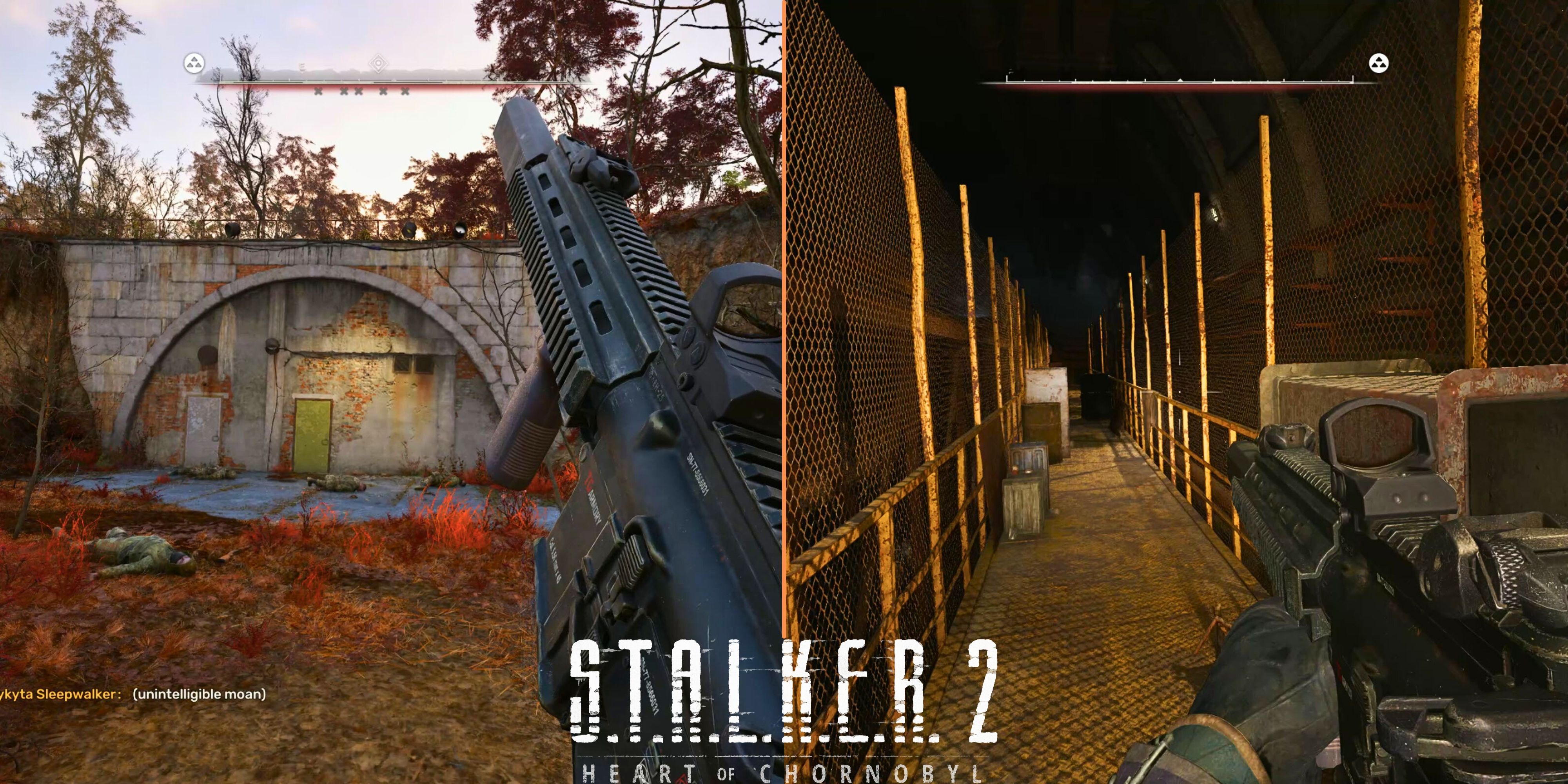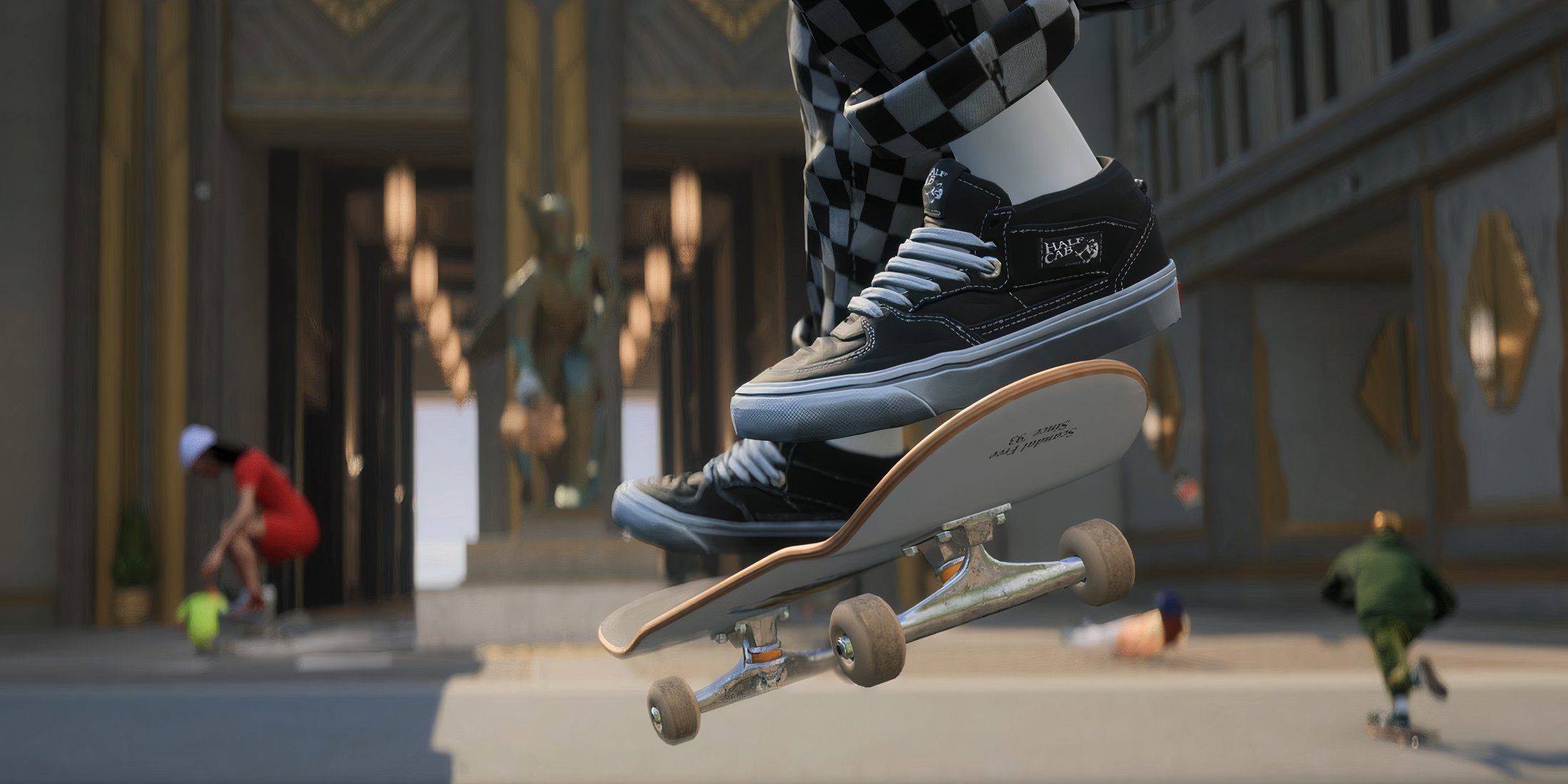*Monster Hunter Wilds* dazzles with its stunning visuals, yet achieving top performance without sacrificing visual quality can be tricky. Here’s a guide to the best graphics settings in *Monster Hunter Wilds* to help you strike that perfect balance.
Monster Hunter Wilds System Requirements
To run *Monster Hunter Wilds* at higher resolutions or max settings, you'll need a high-end GPU with ample VRAM and a robust CPU. You can find where to order *Monster Hunter Wilds* for your preferred platform.
| Minimum Requirements | Recommended Requirements |
| OS: Windows 10 or newer CPU: Intel Core i5-10600 / AMD Ryzen 5 3600 Memory: 16GB RAM GPU: NVIDIA GTX 1660 Super / AMD Radeon RX 5600 XT (6GB VRAM) DirectX: Version 12 Storage: 140GB SSD required Performance Expectation: 30 FPS @ 1080p (upscaled from 720p) | OS: Windows 10 or newer CPU: Intel Core i5-11600K / AMD Ryzen 5 3600X Memory: 16GB RAM GPU: NVIDIA RTX 2070 Super / AMD RX 6700XT (8-12GB VRAM) DirectX: Version 12 Storage: 140GB SSD required Performance Expectation: 60 FPS @ 1080p (Frame Generation enabled) |
Monster Hunter Wilds Best Graphics Settings
Whether you're rocking a high-end RTX 4090 or a budget-friendly RX 5700XT, fine-tuning your graphics settings in *Monster Hunter Wilds* is key to optimizing performance while preserving visual quality. The difference between Ultra and High settings is often minimal visually but can significantly impact performance.
Display Settings

Screen Mode: Choose based on preference; Bordered Fullscreen is ideal if you frequently tab out.
Resolution: Set to your monitor's native resolution.
Frame Rate: Match your monitor's refresh rate (e.g., 144, 240 Hz).
V-Sync: Turn off to reduce input lag.
Graphics Settings

| Setting | Recommended | Description |
| Sky/Cloud Quality | Highest | Enhances atmospheric detail |
| Grass/Tree Quality | High | Affects vegetation detail |
| Grass/Tree Sway | Enabled | Adds realism but has a minor performance impact |
| Wind Simulation Quality | High | Improves environmental effects |
| Surface Quality | High | Details on the ground and objects |
| Sand/Snow Quality | Highest | For detailed terrain textures |
| Water Effects | Enabled | Adds reflections and realism |
| Render Distance | High | Determines how far objects are rendered |
| Shadow Quality | Highest | Improves lighting but is demanding |
| Distant Shadow Quality | High | Enhances shadow detail at a distance |
| Shadow Distance | Far | Controls how far shadows extend |
| Ambient Light Quality | High | Enhances shadow detail at a distance |
| Contact Shadows | Enabled | Enhances small object shadowing |
| Ambient Occlusion | High | Improves depth in shadows |
These settings prioritize visual fidelity over raw FPS, which suits *Monster Hunter Wilds* as it's not a competitive game. However, feel free to adjust if you're still experiencing low frame rates. Start by lowering Shadows and Ambient Occlusion, as they are the most resource-intensive. Additionally, reducing distant shadows, shadow distance, water effects, and sand/snow quality can help manage VRAM usage and boost performance.
Best Settings for Different Builds
Not everyone has a high-end build capable of running games at 4K. Here are tailored settings for various build tiers to help you run *Monster Hunter Wilds* smoothly:
Mid-Range Build (GTX 1660 Super / RX 5600 XT)
Resolution: 1080p
Upscaling: AMD FSR 3.1 Balanced
Frame Gen: Off
Textures: Low
Render Distance: Medium
Shadow Quality: Medium
Distant Shadow Quality: Low
Grass/Tree Quality: Medium
Wind Simulation: Low
Ambient Occlusion: Medium
Motion Blur: Off
V-Sync: Off
Expected Performance: ~40-50 FPS at 1080p
Recommended Build (RTX 2070 Super / RX 6700XT)
Resolution: 1080p
Upscaling: FSR 3.1 Balanced
Frame Gen: Enabled
Textures: Medium
Render Distance: Medium
Shadow Quality: High
Distant Shadow Quality: Low
Grass/Tree Quality: High
Wind Simulation: High
Ambient Occlusion: Medium
Motion Blur: Off
V-Sync: Off
Expected Performance: ~60 FPS at 1080p
High-End Build (RTX 4080 / RX 7900 XTX)
Resolution: 4K
Upscaling: DLSS 3.7 Performance (NVIDIA) / FSR 3.1 (AMD)
Frame Gen: Enabled
Textures: High
Render Distance: Highest
Shadow Quality: High
Distant Shadow Quality: High
Grass/Tree Quality: High
Wind Simulation: High
Ambient Occlusion: High
Motion Blur: Off
V-Sync: Off
Expected Performance: ~90-120 FPS at 4K (upscaled)
*Monster Hunter Wilds* offers a plethora of graphical options, but not all impact gameplay equally. If you're struggling with performance, consider reducing shadows, ambient occlusion, and render distance. Budget users can benefit from FSR 3 upscaling to boost FPS, while high-end builds can handle 4K settings with frame generation enabled.
For the best balance, use a mix of medium to high settings, enable upscaling, and adjust shadows and distance settings according to your hardware capabilities.
And there you have it—the best graphics settings for *Monster Hunter Wilds*.
*Monster Hunter Wilds is available now on PlayStation, Xbox, and PC.*















